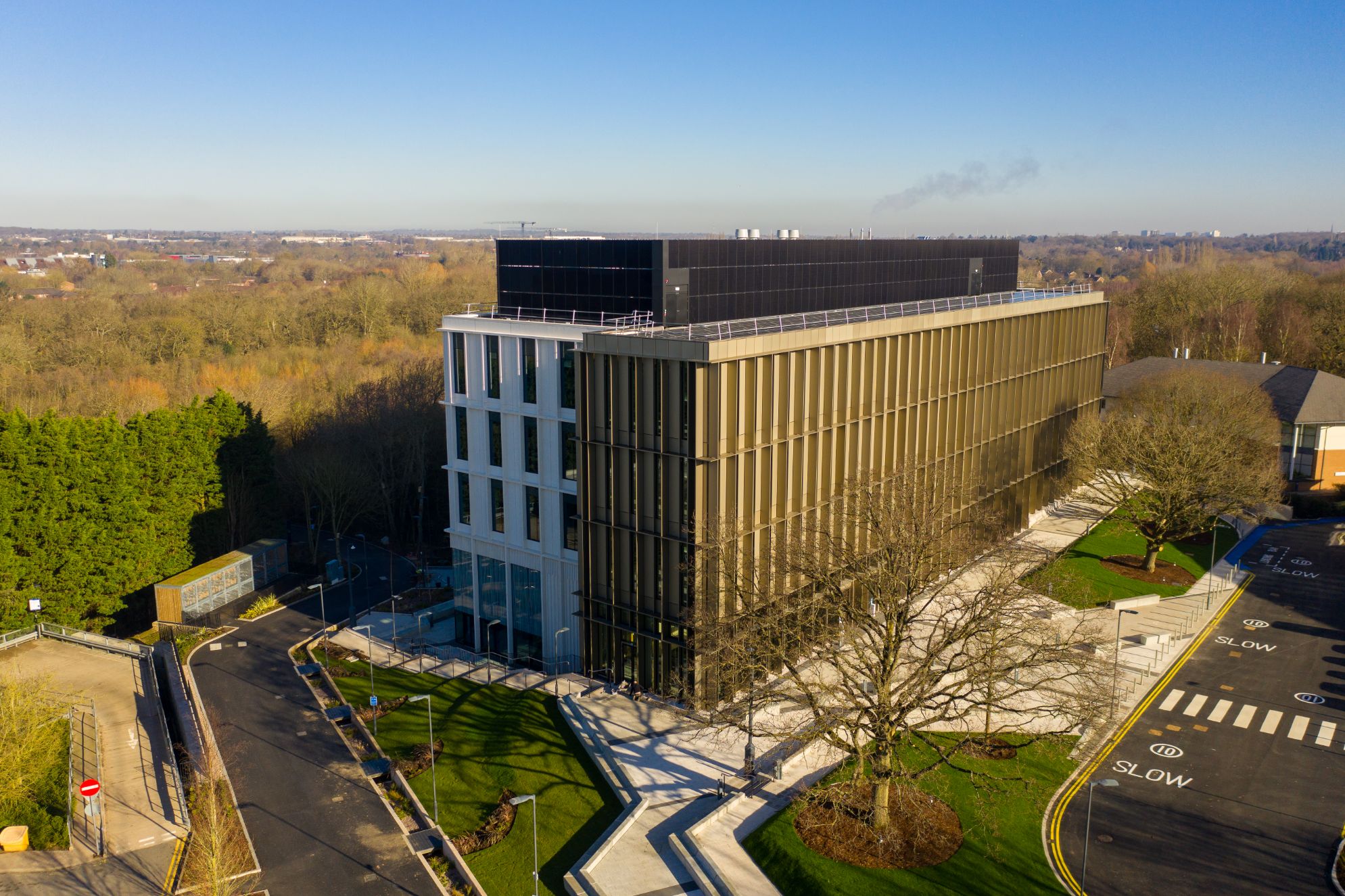The University of Warwick’s Interdisciplinary Biomedical Research Building (IBRB) is a world class research facility, remarkable for its extensive use of offsite manufacture which ensured it could be delivered to quality and timescale, whilst also being highly sustainable. The project was built on a JCT Design and Build Contract.
The IBRB is a £33m project providing a state-of-the-art facility on the University of Warwick’s Gibbet Hall campus. It was designed by Hawkins Brown Architects and Fairhurst Design Group. The main contractor was Wilmott Dixon.
Apropos of the impact of the COVID-19 pandemic on the world over the last two years, IBRB brings 300 biomedical researchers together to fight human infectious diseases and provide world-leading research in neuroscience, microbiology, infection, cell biology, and disease models. The building unites the university’s previously separate schools of life sciences and medicine to create a work environment which fosters innovation through interdisciplinary collaboration.
Beyond a home for researchers, the building also enhances the overall student and academic experience and facilitates the growth of undergraduate schemes. At 7000m², it features a 400-seat lecture theatre, a 5-storey lab, and various social and collaboration spaces, including an atrium, offices, open study space, breakout areas, and a café. The Wolfson Tissue and Mechanobiology and Human Disease Laboratory, provided through a £750,000 grant from the Wolfson Foundation will enable researchers to investigate how cells and tissues perform mechanical functions. Their work will increase the understanding of a wide range of diseases, from cancer to brittle bones and heart disease, positively impacting our ability to fight these conditions.
For a building where quality had to be paramount for a state-of-the-art facility, the 50% level of pre-manufactured value goes far beyond most industry norms. The project made extensive use of Design for Manufacture and Assembly (DfMA), and the offsite manufactured components comprised a 27-metre tall mega riser serving the entire building, a pre-cast concrete frame, timber frame, and cladding. The strategy to use such a high degree of offsite manufacturing simplified the project’s logistics. The pre-fab CLT structure and modular external envelope enabled construction to remain on track despite the impact of COVID-19, and the overall carbon footprint of the project was reduced compared to a traditional, on-site approach. The sustainability credentials are further enhanced by the installation of 600 vertical PV solar panels which offset approximately 26,000kg CO2 in emissions.
The use of offsite manufacture was not without its challenges, however. The mega riser featured 2000 penetrations that had to be pre-cut and aligned. The differential movement between the concrete and timber frames also had to be allowed for. Once complete, the mega rise was dropped into the shaft off a single tower crane in just two days.
The contrasting facades of dark bronze and white concrete are designed to reflect the interdisciplinary research happening within the building and the quality of the work it produces. The striking design creates a recognisable and strong link to the main university campus to the north. The pre-cast concrete clad block houses the “wet” research lab. The bronze aluminium faced block features write-up and meeting areas. The latter block exposes its CLT a glulam frame, creating a soft warm environment for writing up research work.
The JCT Design and Build Contract has become the contract of choice for projects adopting an extensive off-site approach (see also JCT Case Study: ‘Parkside’ Imperial War Museum HQ, JCT News – July 2021). The Design and Build Contract’s approach is able to meet the needs of parties in terms of design and design responsibility but is also an ideal solution for large scale projects and where a complex set of requirements needs to be accounted for in the contract provisions.
Facilitating the ease of parties being able to enter into contract is at the core of JCT’s business, and in so doing helps to play an important role within the industry. Considering the impact of the pandemic and the role of the IBRB, it’s important to remember the importance of the construction industry in being able to facilitate this vital work.
Project Data:
Cost: £33m
Contract: JCT Design and Build Contract
Client: University of Warwick
Main Contractor: Wilmott Dixon
Architect and Interior Designer: Hawkins\Brown Architects
Delivery Architect: Fairhurst Design Group
M&E Engineer: Hoare Lea
Structural and Civil Engineer: Stantec
Landscape Architect: B|D Landscape Architects
Project Management: Turner and Townsend
Cost Consultant: Mace
Planning Consultant: Turley
MEP D&B Contractor: NG Bailey

